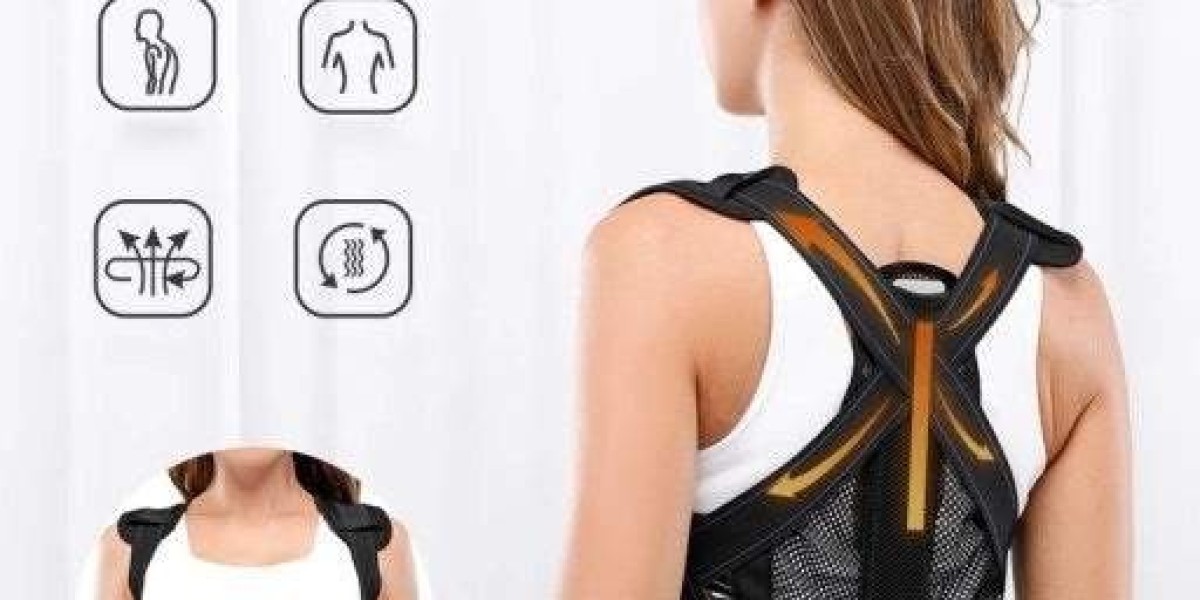I didn’t always think much about my posture. Like many people, I spent my days at a desk, shoulders curved forward, head tilted toward a screen, back slowly protesting louder each week. I brushed it off—“just part of adulting,” right?
But when I started experiencing persistent neck stiffness, headaches, and that dreaded mid-back ache by 3 PM every day, I knew something had to change. Enter: the posture corrector.
Here’s what I learned (and what you should know too).
What Is a Posture Corrector, Really?
Imagine something as simple as a brace or strap gently nudging your shoulders back every time you slouch. That’s what a posture corrector does.
It’s not a medieval torture device, and it’s not magic. It’s a tool—a gentle reminder worn on your back or shoulders, telling your muscles, “Hey, let’s do this the right way.”
There are a few types:
Basic elastic straps that pull your shoulders back
Adjustable braces with more structure
Smart gadgets that buzz when you slouch
Posture shirts that offer low-key correction through compression
The Surprising Impact of Bad Posture
Before using a corrector, I underestimated the damage poor posture could cause. Turns out, it’s more than just a vanity issue. Poor posture affects:
? Your mood and mental health – Slouching can actually increase stress and lower confidence
? Your physical performance – Weak, tight muscles mean less energy and more injuries
? Your breathing – Rounded shoulders reduce lung capacity
? Your focus – Slouching can make you feel more tired and less alert
Once I realized this, I couldn’t ignore my posture anymore.
What Happened When I Started Using a Posture Corrector
I didn’t expect overnight miracles, but after just a week, I started to notice:
✅ Less tension in my upper back and neck
✅ More awareness of how I was sitting and standing
✅ Better energy levels during the day
✅ Fewer end-of-day headaches
The best part? I started to build muscle memory. Even when I wasn’t wearing the corrector, my body would naturally hold itself in a better position.
Tips for Making a Posture Corrector Work for You
If you’re thinking about trying one, here are a few tips from personal experience:
? Start slow – 20–30 minutes a day is plenty to begin with
?️♀️ Do posture exercises – Strengthen your core and back to support lasting change
? Fix your environment – Adjust your chair, screen height, and desk to promote better ergonomics
? Be patient – Real improvement takes time and consistency
?♂️ Use it as a reminder, not a crutch – Your muscles need to do the real work
Should You Try a Posture Corrector?
If you’re feeling stiff, tired, or just self-conscious about how you carry yourself, yes—a posture corrector is worth trying.
It won’t “fix” everything on its own, but it can give you that essential nudge in the right direction. Think of it like a gentle coach, quietly guiding your body back to its natural, upright self.
Final Words: Confidence Starts with Posture
There’s something powerful about standing tall—literally. Better posture doesn’t just ease physical pain; it changes how you see yourself and how others see you.
A posture corrector isn’t just a gadget. It’s a small step toward a stronger, healthier, more confident you.
So if you're tired of slouching through life, maybe it’s time to straighten up. Your spine—and your self-esteem—will thank you.








